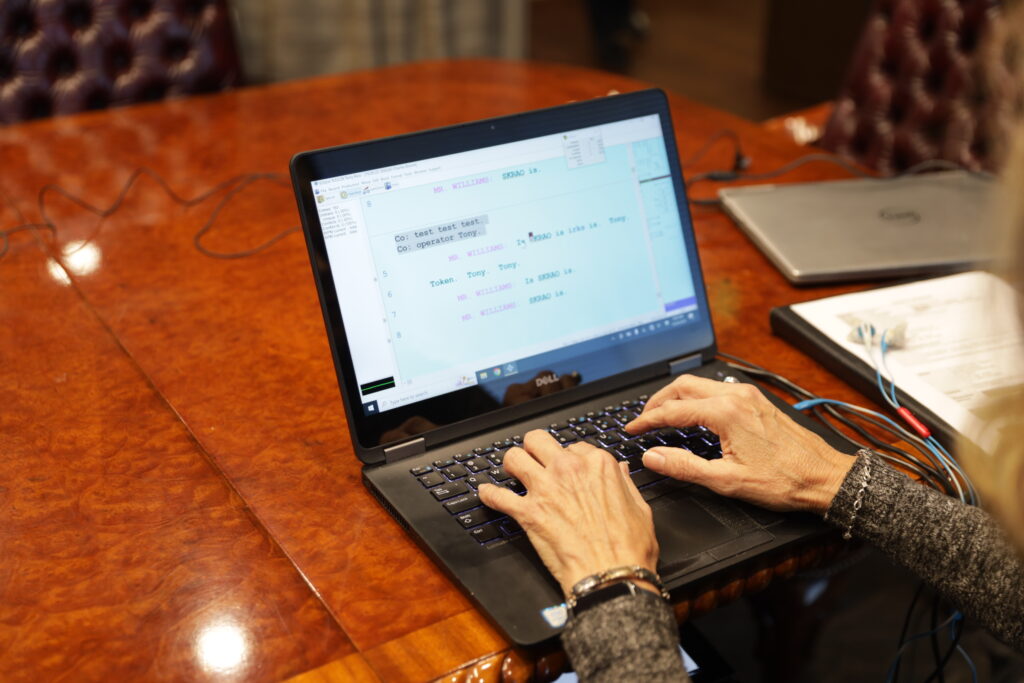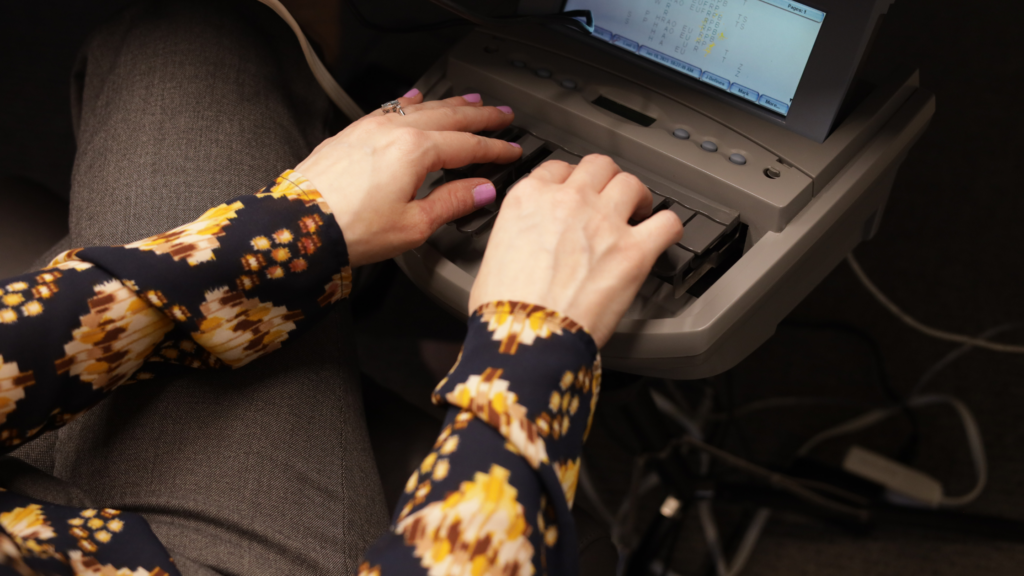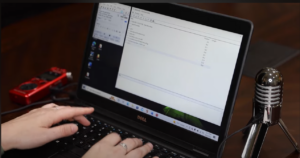Court Reporting Basics: What Are the Parts of a Deposition Transcript
 When attorneys hire a court reporting service, like Elizabeth Gallo Court Reporting, LLC, to handle a discovery or evidence deposition, the court reporter has many duties aside from capturing the oral testimony and providing a transcript. All of these tasks are important and are generally helpful for the counsel involved. In this sense, your court reporter is an ally, although a scrupulously neutral ally. Your court reporter is also the ally of your opposing counsel and the court since accuracy is crucial for everyone’s litigation efforts.
When attorneys hire a court reporting service, like Elizabeth Gallo Court Reporting, LLC, to handle a discovery or evidence deposition, the court reporter has many duties aside from capturing the oral testimony and providing a transcript. All of these tasks are important and are generally helpful for the counsel involved. In this sense, your court reporter is an ally, although a scrupulously neutral ally. Your court reporter is also the ally of your opposing counsel and the court since accuracy is crucial for everyone’s litigation efforts.
What are the duties of court reporters?
Among the duties of your court reporter are:
1. Ensuring the transcript is accurately captioned for the case — this is generally obtained from counsel who has Noticed the deposition
2. Identifying and noting all who are present for the deposition — including the correct spelling of names and titles
3. Giving the oath to the witness
4. Identifying the speakers as the testimony proceeds
5. Keeping track of exhibits — often providing exhibit numbering and labels and
6. Providing a certification for the transcript
As these tasks and duties are undertaken in various ways, the results appear as part of the eventual deposition transcript. Many of these tasks and duties occur early in the proceedings and, thus, will appear toward the beginning of the transcript.
What are the parts of the deposition transcript?
Thus, generally, the first page of the transcript will contain the case caption, including the case number. Then, generally, below the caption will be the title of the transcript. Something like: “Discovery Deposition of WITNESS.” Importantly, the transcript will note the date of the deposition and will also keep track of time as the deposition progresses. If a break is taken, the court reporter will note that a break was taken at a certain time. The court reporter will then note that “testimony continued” at the noted time. This can be important since, in many State jurisdictions, deposition time is limited by Rule. If there is a dispute, the judge will want to see the transcript and will examine the time notations.
The next couple of pages in the transcript will identify who is present in the room, indicating counsel for each party, the witness, and any others who may be present. With counsel, generally, addresses and phone numbers are also provided in the transcript.
Then, just before the questions and answers begin, the court reporter will swear in the witness. This will also be stated in the transcript.
The main portion of a deposition transcript will contain the testimony – the questions and answers as provided orally by counsel and the witness. The transcript will be numbered by page and by line. Thus, if the transcript is cited to the court in a brief, the page and line numbers are provided for the ease of the judge.
The transcript will also identify who is speaking. This is important, of course, and generally, it is phrased as “by NAME” (identifying the lawyer asking questions) and “by the Witness.” But the court reporter also notes when opposing counsel makes a comment or an objection. Again, an accurate denotation is made, such as “by NAME” (identifying opposing counsel). As noted, the transcript also identifies any breaks in the proceeding and any other unusual occurrence.
In addition, where exhibits are marked for use in the testimony, a notation will appear in the transcript saying something like “Whereupon Exhibit 10 was marked…”
Towards the end of the transcript, there will be the court reporter’s Certification and also a place for the witness to sign the deposition (or a statement that “signature is waived”).
Also, at the end of the transcript will be “errata” pages (if allowed by local Rule). These are pages where the witness can state that words on certain pages/lines were erroneously transcribed and should have been something different. Errata pages are rare.
Further, where agreed, a deposition transcript will contain bound copies of the exhibits.
Finally, an index is usually provided that gives the page numbers for any exhibits that were marked. Sometimes this is provided at the beginning of the transcript. Full word indexes are often provided too.
Contact Elizabeth Gallo Court Reporting Today
For more information, call the experienced court reporters at Elizabeth Gallo Court Reporting. We follow the best practices in order to provide excellent litigation support to our customers. Contact us today to learn about our services and how we can help you.







